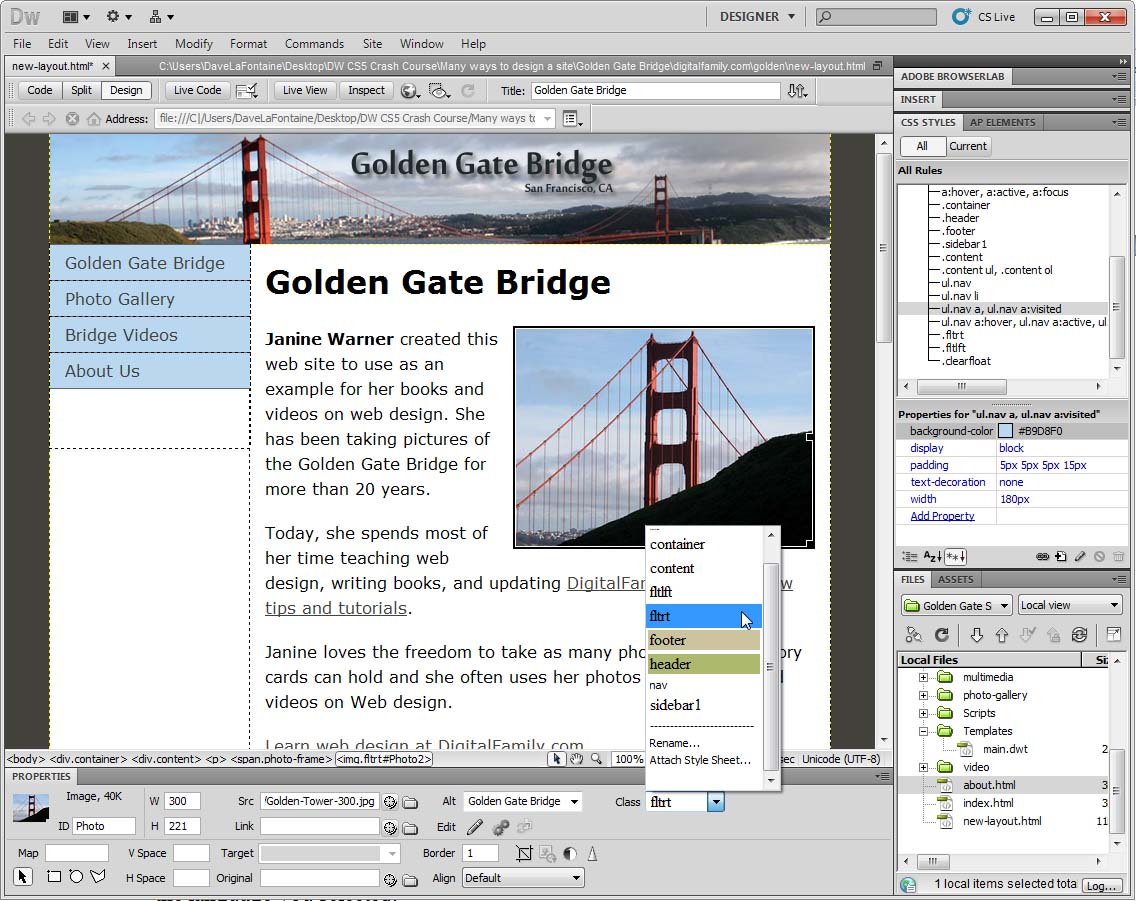

- ADOBE DREAMWEAVER CS5 BASICS HOW TO
- ADOBE DREAMWEAVER CS5 BASICS SOFTWARE
- ADOBE DREAMWEAVER CS5 BASICS CODE
- ADOBE DREAMWEAVER CS5 BASICS SERIES
It allows you to visually shrink parts of your code when you don’t need them.
ADOBE DREAMWEAVER CS5 BASICS SOFTWARE
From the official website of the city of Phoenix, Arizona over the FCC to Goodwill, well-known names rely on the software to design their websites. According to BuiltWith, it boasts a number of high-profile users. This might also be the reason why big names out there trust Dreamweaver. That way, theoretically, you can put together an entire website by hand and upload it to your server. Instead, as you will see in the tutorial below, Dreamweaver will automatically create the necessary markup for you. This is very useful because it allows you to build the skeleton of a website (including Bootstrap sites) quickly and without the need to write a single line of code. Basically, you see your website as you would see in a browser but also have the ability to manipulate it. It allows you to place website elements the way you create a layout in Word. The visual design toolbox basically lets you build websites with your mouse.

Create Websites Through a Visual Design Interface What makes it special is that it is somewhere between a CMS or WYSIWYG editor (where you control everything about your website through a visual interface) and a pure code editor. That means it’s a piece of software that combines different tools to make web design and development easier. On the surface, Dreamweaver is an IDE ( Integrated Development Environment). Total time to create a website using Dreamweaver: ~2-3 hours
ADOBE DREAMWEAVER CS5 BASICS HOW TO
Packed with hands-on instruction and step-by-step tutorials, the Dreamweaver CS5 Bible has everything you need to harness the incredible power of this amazing Web development tool. Starting with Dreamweaver basics, expert author and Adobe guru Joe Lowery ( Adobe CS4 Web Workflows and Adobe Dreamweaver CS4 Bible) guides you through the ins-and-outs of Dreamweaver showing you how to build dynamic, data-driven sites in no time.ĭetails how to use Dreamweaver with PHP, ASP.NET, ColdFusion and more to access and work with live backend data Describes designing for and working with popular Content Management Systems (CMS) including WordPress, Joomla, and Drupal Includes how-to's on using HTML, CSS, and JavaScript in Dreamweaver to build attractive dynamic websites, as well as comprehensive information on creating and working with both design and code templates to provide consistency across a web site with minimal effortĭreamweaver has established itself as one of the leading Web development tools and Dreamweaver CS5 Bible is the must-have learning tool and reference guide for any Web developer using Dreamweaver.How to build a Dreamweaver website (table of contents):
ADOBE DREAMWEAVER CS5 BASICS SERIES
Updated version of the bestselling Dreamweaver Bible series


 0 kommentar(er)
0 kommentar(er)
